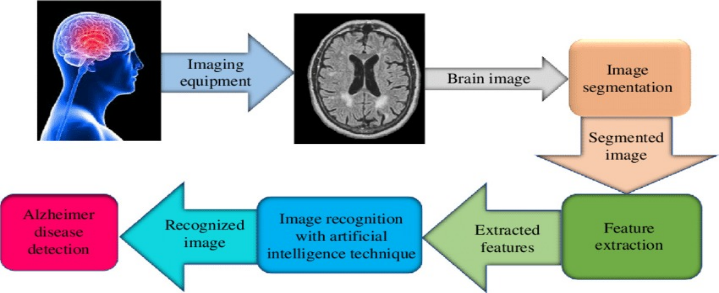Region-based Convolutional Neural Network Driven Alzheimer’s Severity Prediction
Main Article Content
Abstract
It's important to note that Alzheimer's disease can also affect individuals over the age of 60, and in fact, the risk of developing Alzheimer's increases with age. Additionally, while deep learning approaches have shown promising results in detecting Alzheimer's disease, they are not the only techniques available for diagnosis and treatment. That being said, using Region-based Convolutional Neural Network (RCNN) for efficient feature extraction and classification can be a valuable tool in detecting Alzheimer's disease. This new approach to identifying Alzheimer's disease could lead to a more accurate and personalized diagnosis. It can also help in early treatment and intervention. However, it's still important to continue developing new methods and techniques for this disorder. Considering this our work proposes an innovative Region-based Convolutional Neural Network Driven Alzheimer’s Severity Prediction approach in this paper. The exhaustive experimental result carried out, which proves the efficacy of our Alzheimer prediction system.
Article Details
References
Alzheimer’s Disease International(ADI), https://www.alz.co.uk/aboutdementia
Virtual Medica Centre, https://www.myvmc.com/investigations/3dmagnetic-resonanceimaging-3d-mri/
Shaoqing Ren, Kaiming He, Ross Girshick, Jian Sun “Faster R-CNN: Towards Real-Time Object Detection with Region Proposal Networks “,Computer Vision and Pattern Recognition
Orr, G., Pettersson-Yeo, W., Marquand, A.F., Sartori, G. and Mechelli, A., 2012. Using support vector machine to identify imaging biomarkers of neurological and psychiatric disease: a critical review. Neuroscience Biobehavioral Reviews, 36(4), pp.1140-1152.
Priyadharsini M., S. ., & Sathiaseelan, J. G. R. . (2023). Mammogram Breast Tumor Abnormalities Detection Using DeepCNN with Discrete Cosine Transform Features. International Journal of Intelligent Systems and Applications in Engineering, 11(2s), 134 –. Retrieved from https://ijisae.org/index.php/IJISAE/article/view/2517
Srivastava, N., Hinton, G.E., Krizhevsky, A., Sutskever, I. and Salakhutdinov, R., 2014. Dropout: a simple way to prevent neural networks from overfitting. Journal of Machine Learning Research, 15(1), pp.1929-1958.
Donahue, Jeff, et al. ”Decaf: A deep convolutional activation feature for generic visual recognition.” International conference on machine learning. 2014.
Botha, D., Dimitrov, D., Popovi?, N., Pereira, P., & López, M. Deep Reinforcement Learning for Autonomous Robot Navigation. Kuwait Journal of Machine Learning, 1(3). Retrieved from http://kuwaitjournals.com/index.php/kjml/article/view/140
The Open Access Series of Imaging Studies (OASIS), http://www.oasisbrains.org/
Alzheimer’s Disease Facts and Figures, http://www.alz.org/facts/

